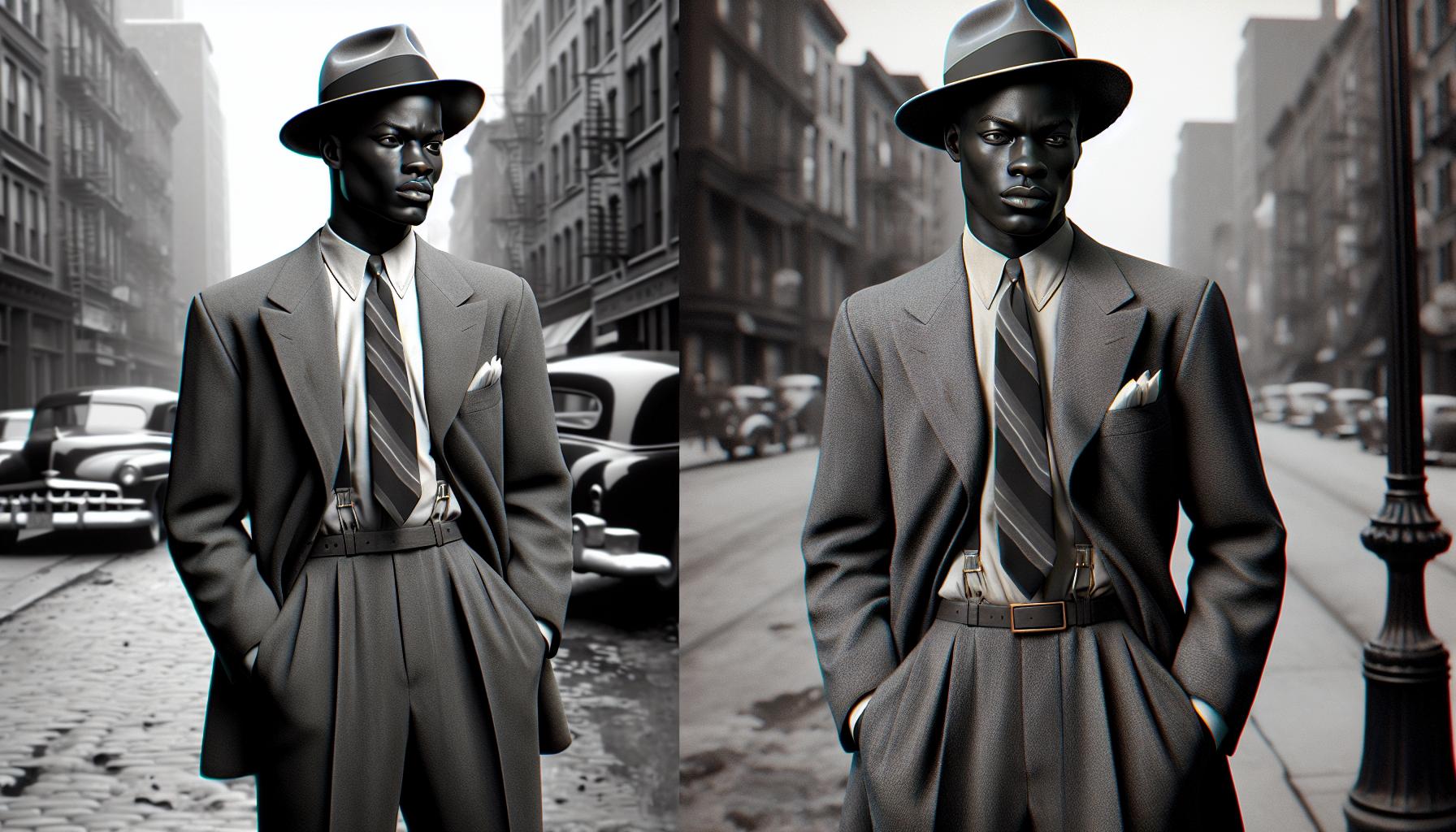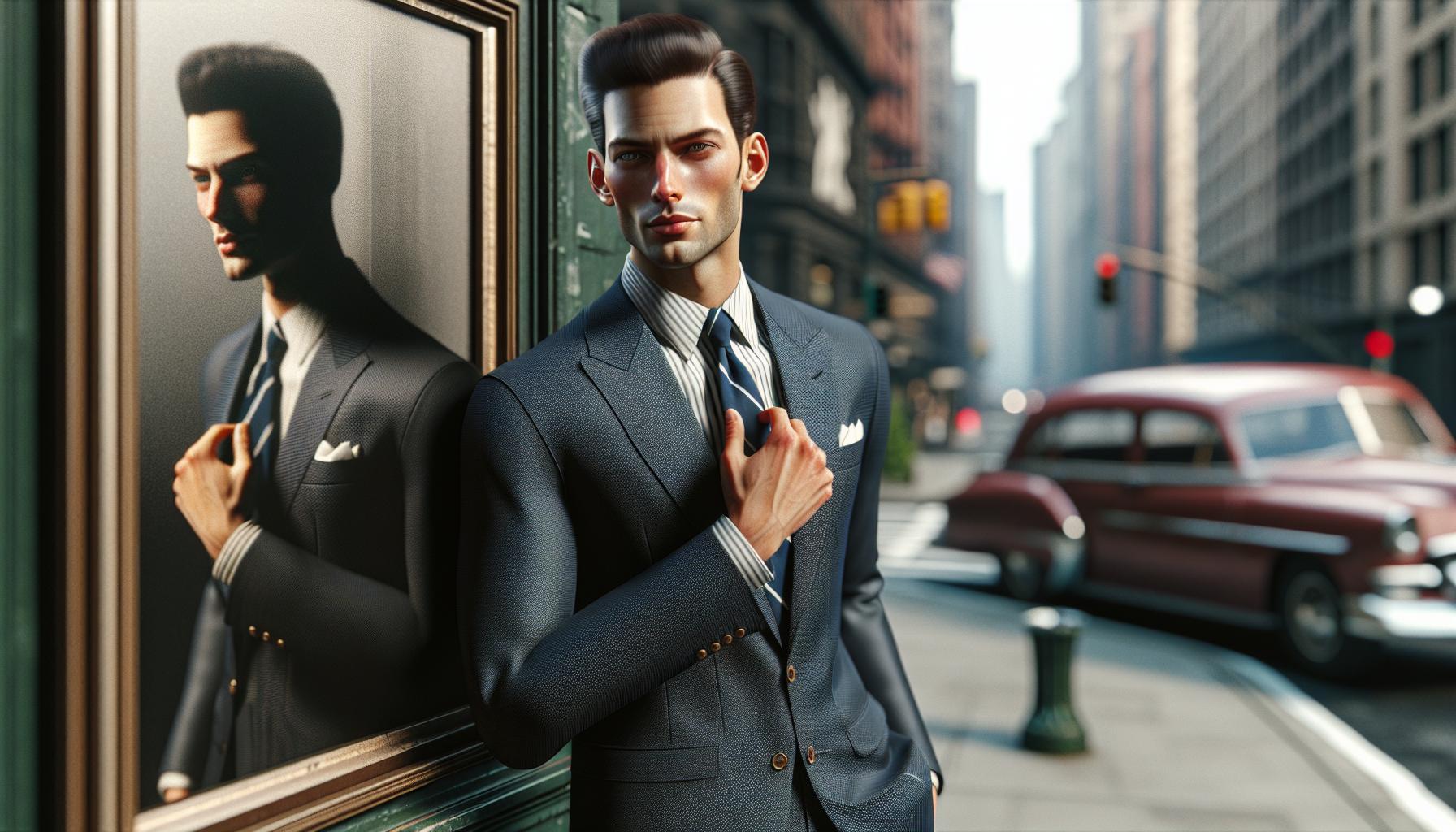The 1950s were a time when men’s fashion took a sharp turn from the drab to the dapper. Picture this: sharp suits, slicked-back hair, and a confidence that could only come from knowing one’s outfit was on point. Men weren’t just dressing to impress; they were dressing to conquer the world, one stylish step at a time.
Men’s Fashion 1950s
Men’s fashion in the 1950s marked a significant evolution in style and presentation. Sharp suits became the standard, with tailored fits emphasizing a polished look. Tailors crafted clothing from high-quality materials, showcasing workmanship that elevated men’s attire to new heights.
Slicked-back hairstyles complemented these sophisticated looks, highlighting neatness and masculinity. Accessories like skinny ties, pocket squares, and fedoras completed outfits, adding an extra touch of elegance. Casual wear also emerged during this decade, with cotton shirts and trousers offering comfort without sacrificing style.
The influence of cinema shaped fashion choices. Icons like James Dean and Marlon Brando popularized rebellious styles, blending casual and formal elements. Their impact led to the adoption of denim jeans and leather jackets within mainstream men’s fashion.
Color palettes shifted towards bolder choices. Rich hues embraced by men reflected confidence and individuality. Patterns, especially checks and stripes, became common, adding visual interest to outfits.
Social changes affected fashion trends as well. The post-war prosperity allowed many men to invest in personal style, impacting clothing choices across various demographics. Fashion magazines highlighted these changes, promoting a more sophisticated aesthetic for men.
Overall, the 1950s revolutionized men’s fashion. Attention to detail, an emphasis on quality, and the inspiration drawn from pop culture defined this transformative decade. Each element, from tailored suits to casual attire, contributed to the era’s lasting legacy in men’s style.
Key Trends Of The Decade

Men’s fashion in the 1950s showcased distinct trends that reflected a shift towards sophistication and individuality. This decade featured key styles in casual wear, formal wear, and accessories that defined a generation.
Casual Wear
Casual wear during the 1950s emphasized comfort while maintaining an air of style. Cotton shirts, often patterned or in solid colors, became staples in a man’s wardrobe. Trousers shifted from traditional styles to more relaxed fits, allowing for greater ease of movement. Denim gained popularity due to its association with rebellion and youth culture, highlighted by celebrities like James Dean. Simple yet stylish loafers complemented casual outfits, creating a polished yet laid-back look.
Formal Wear
Formal wear reflected the decade’s focus on sharp tailoring and elegance. Men donned suits made from high-quality fabrics, often in darker hues, providing a classic look. Fitted jackets and wide lapels characterized this era’s suits, enhancing masculine silhouettes. Dress shirts featuring crisp collars and subtle patterns contributed to a sophisticated appeal. The addition of skinny ties became the norm, offering a modern twist to traditional formal attire.
Accessories
Accessories played a vital role in 1950s men’s fashion, allowing for personal expression. Fedoras and trilby hats graced the heads of men, signaling refinement and poise. Pocket squares added a touch of flair, elevating any suit ensemble. Watches became essential accessories, showcasing punctuality and style simultaneously. Footwear, including sleek dress shoes and loafers, completed outfits with finesse, underscoring the importance of attention to detail in men’s fashion.
Influential Designers And Brands

The 1950s showcased a dynamic array of influential designers and brands that shaped men’s fashion. Significant contributions from innovative minds defined the era’s distinctive styles.
Notable Designers
Christian Dior revolutionized menswear with his “New Look,” emphasizing structured tailoring and refined elegance. Simultaneously, Pierre Cardin introduced modernist elements, incorporating geometric shapes into men’s suits. Yves Saint Laurent gained recognition for introducing creative flair, particularly with his smoking jacket, blending classic styles with contemporary aesthetics. Each designer brought unique touches, combining functionality with fashion to elevate men’s wardrobe options.
Popular Brands
Popular brands also played essential roles in the 1950s fashion landscape. Brooks Brothers remained a staple for tailored suits, promoting a polished, preppy aesthetic. Levi’s established itself through denim jeans, appealing to the rebellious youth culture. Meanwhile, Schott NYC gained fame for its iconic leather jackets, often associated with rock ‘n’ roll culture. Other brands like Pierre Cardin and Hugo Boss contributed significantly by pushing boundaries, ensuring their creative visions resonated with a broader audience.
Cultural Impact On Men’s Fashion

The 1950s showcased a profound cultural impact on men’s fashion, influenced by prominent figures and evolving societal norms.
Hollywood Influence
Hollywood stars revolutionized men’s fashion, creating iconic looks that resonated with the public. James Dean, with his leather jackets and jeans, symbolized youthful rebellion. Marlon Brando’s rugged style captured a sense of toughness and masculinity. These celebrities set trends, making tailored suits and casual wear desirable among men. Their styles became synonymous with confidence, encouraging men to embrace a more polished appearance. Film screenings popularized these looks, ensuring that audience members aspired to mirror their favorite stars’ fashion choices. As a result, clothing that once denoted class gained universal appeal, embedding celebrity culture into everyday life.
Music And Subcultures
Music also played a pivotal role in shaping men’s fashion during the 1950s. The emergence of rock ‘n’ roll influenced youth culture and established distinct styles. Artists like Elvis Presley and Chuck Berry popularized unique dressing, inspiring young men to adopt bold looks. Leather jackets and pompadours became synonymous with the rock era. This fashion represented rebellion against traditional norms. Meanwhile, subcultures like the Greasers distinguished themselves with their rugged attires and denim. These styles helped express individuality, showcasing a desire for personal identity amid global changes. Music and fashion forged an inseparable connection, driving trends that defined an entire generation.
The 1950s marked a pivotal era in men’s fashion that transformed personal style and self-expression. With a blend of sophistication and rebellion, men embraced tailored suits and casual wear that reflected their ambitions and individuality. The influence of iconic figures and the rise of pop culture reshaped wardrobes, making fashion a vital aspect of identity.
As trends evolved, they left an indelible mark on men’s clothing choices, bridging the gap between formal elegance and relaxed comfort. The legacy of 1950s fashion continues to inspire contemporary styles, reminding us of the power of clothing to convey confidence and character.

